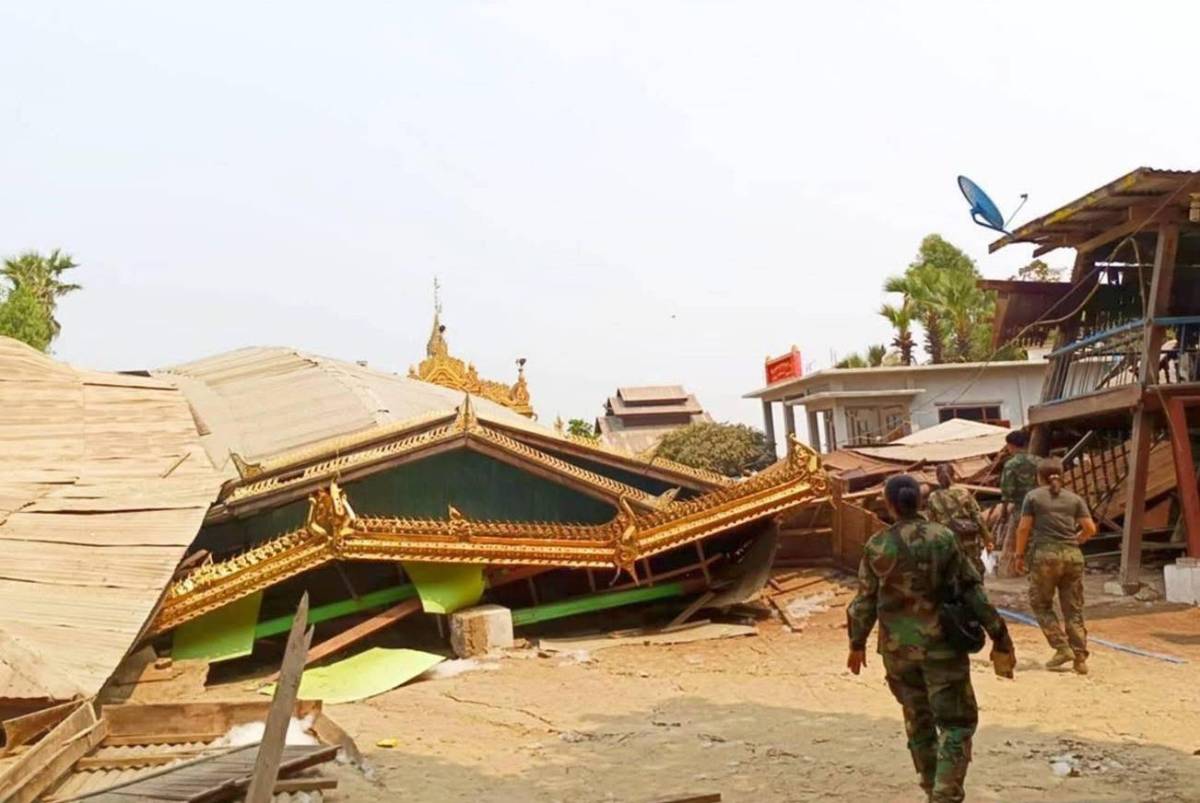Myanmar earthquake death toll hits 3,085 as rescue efforts continue
Hospitals overwhelmed as thousands seek urgent medical treatment

DUBAI: The death toll from Myanmar’s massive 7.7-magnitude earthquake has risen to 3,085, with 4,715 others injured, the military-led government reported on Thursday.
Rescue teams are still working to locate survivors trapped under collapsed buildings, while international aid groups scramble to provide medical care and emergency shelter.
On Wednesday, search teams pulled two men alive from a hotel in Naypyitaw, five days after the quake. Another survivor was rescued from a collapsed guesthouse in Sagaing, near Mandalay, where the earthquake's epicentre was located. A fourth rescue was reported in Mandalay later that evening.
Despite these successes, most search teams are recovering bodies rather than survivors, the Associated Press reports.
The United Nations warned that the disaster has deepened an already dire humanitarian crisis in Myanmar, where more than 3 million people were displaced before the quake struck.
Military ceasefire declared
The ruling military junta announced a temporary ceasefire on Wednesday, suspending combat operations until April 22 to facilitate relief efforts. This follows earlier unilateral ceasefires by resistance groups fighting against military rule. However, the military warned that it would still take “necessary” action if these groups used the ceasefire to regroup or launch attacks.
International response
More than 1,550 international rescuers are working alongside locals to assist in relief efforts. China has sent 200 emergency personnel and pledged $13.8 million in aid, while India, Russia, and the UK have also provided assistance.
The UAE deployed a search and rescue team comprising members of Abu Dhabi Police and the National Guard. The team is actively assisting in locating survivors and providing medical aid in the hardest-hit areas.
In contrast, the United States has committed only $2 million in aid. The limited contribution has drawn criticism, especially as the country undergoes restructuring within its foreign aid agency.
Impact beyond Myanmar
The earthquake was so powerful that it shook neighbouring Thailand, where a high-rise building under construction in Bangkok collapsed. The disaster killed 22 people in the Thai capital and injured 35 more, mostly at the construction site. Emergency workers are still searching for survivors in the debris.
In Myanmar’s Sagaing region, the fire department headquarters was destroyed, taking with it much-needed rescue equipment. Authorities fear that without proper resources, the death toll will continue to climb as recovery efforts drag on.
Healthcare system strained
The World Health Organization (WHO) reported that four hospitals and one health centre in Myanmar were completely destroyed, while 32 hospitals and 18 health centres sustained partial damage. With infrastructure compromised and patient numbers surging, access to healthcare has become nearly impossible in many affected areas.
India has deployed a mobile hospital, while a joint Russian-Belarusian medical team has begun operating in Mandalay. However, with aftershocks still rattling the region, many people are afraid to return indoors, further complicating aid distribution efforts.
Future challenges
With Myanmar’s monsoon season approaching in just a month, the UN has urged the international community to increase aid before the crisis worsens. Many fear that further instability, combined with the destruction caused by the earthquake, could push the country into an even deeper humanitarian disaster.
The true scale of the tragedy remains unknown, as many areas remain cut off due to damaged infrastructure and ongoing security concerns. Experts believe the final death toll could be significantly higher than the current figures.